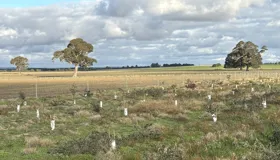Australia’s CEFC: The catalyst corporation

This article originally appeared in IPE Real Assets and is republished with permission.
February 2024
Australia’s CEFC: The catalyst corporation
Australian green bank CEFC has become an important partner for institutional investors.
By Florence Chong
Australian green bank CEFC has become an important partner for institutional investors. Florence Chong reports
When in 2021 Dutch asset manager Van Lanschot Kempen Investment Management and, a year later, Canada’s Caisse de depot et placement du Quebec (CDPQ) came to Australia looking to invest in sustainable agriculture, their local capital partner became none other than the country’s green bank, the Clean Energy Finance Corporation (CEFC).
In each instance, the offshore investors saw CEFC as an essential ally for their sustainable investment objectives.
CEFC has invested A$50m (€31m) with Kempen in what is known as the Transforming Farming Platform, an open-ended farmland fund guided by the objectives of the United Nations Sustainable Development Goals, which include eliminating hunger and improving clean water.
It allocated a similar amount to the Canadian pension plan manager when it established the A$200m CDPQ Australian sustainable-agriculture platform in 2023. Both vehicles are managed by Gunn Agri, an Australian agricultural asset manager, the conduit through which the CEFC met its two co-investors and invests in the sector.
Heechung Sung, CEFC’s head of natural capital, says: “You can imagine an investor like CDPQ having a big capital base to deploy from. So the CDPQ were not necessarily looking for capital. They saw us as an important strategic partner in this investment.
“This is their first investment into Australian agriculture. The reason we partnered with CDPQ is that they are long-term investors who have a sustainable land management strategy that underpins all their investments.
“They invest to decarbonise greenhouse gas emissions, so they are an aligned investor with us. Being a partner with CDPQ is really important because of that capital partnership profile.”
The Australian government agency was created to invest alongside others to help achieve net-zero emissions. By the middle of 2023, CEFC had committed a total of A$12.7bn to ventures since its inception in 2012, mainly within the property and FarmPrint will enable Australian farmers to monitor their energy sectors, with a total transaction value of A$48.8b. Today, CEFC is an important niche player with small, but strategic investments across Australia’s agriculture industry.
Agriculture represents about 12% of Australian greenhouse gas emissions. The ambition of Australia’s A$17.6bn red meat and livestock industry, as an example, is to be carbon-neutral by 2030.
So far, CEFC has allocated more than A$500m to small and large-scale agricultural projects, including emerging soil-carbon initiatives – one of the five priorities identified in what is known as the Technology Investment Roadmap Low Emissions Technology Statement, which details a path to net zero. The document was issued by Australia’s federal Department of Climate Change, Energy Environment and Water.
Carbon credit methodology in Australia, Sung says, is mostly underpinned by natural capital methodology. Industries that are in transition and hard to abate, such as transportation, have to “plant” their net-zero or emission-reduction pathway with high-integrity carbon offsets. They look for natural assets which have a huge potential to be a carbon sink. “Therefore, the challenge is how to redesign our landscape to ensure that we maximise environmental outcome,” Sung says.
“Part of our strategic initiative at the CEFC is to address the climate-change transition through natural capital assets, because an industry that is underpinned by natural assets, such as agriculture and forestry, will not decarbonise through energy transition alone. It also needs investment in the sector to drive the abatement in its operations.”
In December, CEFC entered the forestry sector with a A$75m commitment to the A$600m Australia New Zealand Landscapes and Forestry Fund (ANZLAFF), managed by New Forests. Sung says: “As we all transition to a low-carbon future, the plantation forestry industry has an important role to play in the transition, by reducing its own operating emissions while also generating high-integrity carbon credits which can be used by industry and high emitters to offset their carbon footprint.”
She says such assets need long stewardship; unlike real estate or infrastructure, they cannot be dismantled and rebuilt. “Natural assets are finite, and we must utilise them in the most efficient way to service a growing and urbanising population. We need to ensure we operate at the most efficient level and that we can produce more with less. That means a sustainable agriculture strategy looking at a production system that will be good for the planet while also servicing a growing and hungry world.
“All our sustainable agriculture investment focuses on managing the landscape sustainably through better water and soil management, ensuring that maximum conservation potential is considered. It is broader than production system efficiency; it is an investment in the environment.”
CEFC’s first investment in agriculture was in a A$1bn Macquarie fund, which ran a diversified permanent and row-cropping strategy in the mid2010s. The green bank invested A$100m and was one of the Macquarie fund’s first Australian co-investors. In 2022, CEFC committed A$50m to a second Macquarie-managed vehicle, an open-ended livestock fund.
Together with Macquarie, CEFC has worked with the CSIRO on the development of FarmPrint, a tool designed to enable Australian farmers to monitor, benchmark and evaluate their on-farm carbon footprints.
It has also invested in the Wyuna Regenerative Agriculture Investment Fund – jointly with the Goodman Group. The fund was designed to help the global logistics landlord and developer mitigate the impact of the built environment on the environment.




